Research Article 
 Creative Commons, CC-BY
Creative Commons, CC-BY
Doctors’ Opinion about Importance of Olive Leaves in Oxidative and Physical Stress
*Corresponding author: Cezar Honceriu, Faculty of Physical Education and Sport, Alexandru Ioan Cuza University, Centre of Interdisciplinary Research in the Science of Human Motricity, Romania.
Received: November 10, 2021; Published: November 29, 2021
DOI: 10.34297/AJBSR.2021.14.002048
Abstract
Background: Olive leaves are known for multiple benefits, including those antioxidants, anxiolytics, and support of physical effort.
Objectives: The objective was to evaluate Medical Doctors (MD) opinion before and after a post-graduated medical course about the importance of Olive Leaves (OL) in Oxidative (OS) and Physical Stress (PS).
Methods: 103 MD answered a detailed questionnaire, which included questions such as:
a. How many OL-courses did you attend.
b. What are the native olive tree countries
c. How many olive tree products do you know?
d. What are the basic OL-constituents
e. What are the main OL-effects
f. On scale 1-10 how much OL can improve stress/ anxiety/ oxidative stress/ physical effort/ endurance/ fatigue.
g. What are the ages to which OL can be administered
h. Do you personally use/will use OL extract
i. Do you indicate/will indicate OL extract to patients.
j. What trading OL extract-forms do you know/use/indicate.
k. What results did you/ will you achieve from OL extract-use/indication
l. How can be explained the antioxidant effect/ sport benefits of OL.
m. On scale 1-10 how much this course helped you know more about OL. Statistical evaluation was done using the student test.
Results: Most MD responses:
a. To none.
b. Mediterranean countries
c. Olives and olive oil.
d. I don’t know
e. Antioxidant, cardiovascular, immune protection.
f. 4/ 1/ 6/ 2/ 2/ 2
g. Any age.
h. Never indicate/ Occasionally will indicate
i. Never use/ Occasionally will use.
j. Do not know/ Do not use
k. I expect antioxidant, cardiovascular, metabolic, immune effects.
l. Due to the composition.
m. 9.4.
Conclusions:
a. This postgraduate course for MD, seems to be the first one regarding OL.
b. Most of the MD respondents do not know the composition of OL and have very brief information about OL.
c. Most MDs know that OL have anxiolytic effects, but they have very brief information about the importance of using OL in sports and physical
stress.
d. We appreciate that this course has achieved its goal of informing MD about the role of OL in oxidative and physical stress, but additional
information about the role of OL in physical effort would be useful for medical practice.
Keywords: Olive Leaves; Oxidative Stress; Physical Stress; Medical Doctors; Fresh Leaves; Human Health; Asthma; Bioactive Phenolic; Mediterranean; Anti-Oxidation; Exercise and Sports
Introduction
Olive leaves have been used in Mediterranean countries for human health, being beneficial [1]. Thus, they have been used for the realization of traditional remedies [1,2] and in the human diet in the form of extracts, tea, and powder [3]. Olive leaf tea has been used over time by pollination in the Mediterranean area to cure certain diseases [1]. Oral extract from the dried plant, orally, has been shown to be effective in treating asthma [4]. The infusion of fresh leaves, administered orally, has an important antiinflammatory effect [5]. The decoction of dried fruits and leaves has been used orally to treat respiratory and urinary tract infections, as well as diarrhea [6] and diabetes [7]. Olive leaf tincture has been used orally in fever [8]. Olive leaves have a high content of bioactive phenolic compounds [9] of which hydroxytyrosol is an important anti-oxidation compound [10].
Hypothesis
Olive leaves and olive leaf extract are known for their many actions, the most important being those antioxidants, with beneficial effects including in exercise and sports.
Objectives
The objective was to evaluate Medical Doctors (MD) opinion before and after a post-graduated medical course about the importance of Olive Leaves (OL) in Oxidative (OS) and Physical Stress (PS).
Material and Methods
Study and measurements have been carried out in July 2019. Participation of all subjects in the study was voluntary. The subjects were MDs, of different specialties: 50 men and 53 women; totally 103 (=N). The average age of participants was: 42.3±4, for men; 44.9±9, for women. All the MD participants attended the same postgraduate course, on the topic of adaptogens. All MD subjects answered the same questionnaire, which contained 13 items, with their subitems (Table 1). Participants answered the first 12 items, 15 minutes before the course, and the last item, 13, 15 minutes after the end of the course. For data analysis we used the percentage of the total number of participants (% of N) who responded to each subitem.
Results
The presentation is in the order of items in the questionnaire.
a. How many OL-courses did you attend (Figure 1). All
participants (100%) mentioned that they have not attended yet
another OL course.
b. What are the native olive tree countries (Figure 2). Most MD participants (99.0%) mentioned that the native countries for OL are Mediterranean countries, and the fewest (1%), mentioned that there are other countries than those mentioned, such as the Arab countries and India.
c. How many olive tree products do you know and which
(Figure 3). Most MD participants (91%) answered that they know
two products (olive oil and olives), a small number know several
products (9%), there was no participant who did not know any
product or only one (0%).
d. What are the basic OL-constituents (Figure 4). Most MD
participants (73%) responded that they did not know any OL
constituent, some (12%), mentioned Oleuropein as a constituent
and the fewest mentioned other elements (15%).
e. What are the main OL-effects (Figure 5). Most MD participants (71%) responded that the main OL-effects are antioxidant, some of them (12%) mentioned cardiovascular protection, some of them (13%) mentioned immune protection and the fewest (4%) mentioned other effect.
f. On scale 1-10 how much can OL improve stress/anxiety/
oxidative stress/physical effort/ endurance/ fatigue (Figure 6).
Most MD participants responded: with 4, for OL can improve stress
(60%); with 1, for OL can improve anxiety (62%); with 6, for OL can
improve oxidative stress (71%); with 2, for OL can improve physical
effort (51%); with 2, for OL can improve endurance (64%); with 2,
for OL can improve fatigue (53%).
g. What are the ages to which OL can be administered
(Figure 7) the fewest MD participants responded that the ages
at which OL can be administered are 65-90 years (9%) and >90
years (4%) respectively? Most MD participants responded that the
administration age is between 19-44 (71%) and 45-64, respectively
(51).
h. Do you indicate/will indicate OL extract to patients (Figure 8). Most MD participants (99%) responded that they never indicate OL, the fewest responded that they rarely (1%) indicate OL. Most MD participants (64%) responded that they occasionally will indicate OL, the fewest responded that they often (24%) or rarely (12%) indicate OL.
i. Do you personally use/will use OL extract (Figure 9a,9b). Most MD participants (69%) responded that they never use OL, the fewest responded that they rarely (19%) or occasionally (12%) use OL. Most MD participants (73%) responded that they occasionally will use OL, the fewest responded that they rarely (15%) or often (12%) use OL.
j. What trading OL extract-forms do you know/use/indicate (Figure 10). Most MD participants (94%) responded that they do not know any form of OL extract preparation; fewer MD participants (6%) responded that they know OL extract as liquid extract. Most MD participants (91%) responded that they do not use any form of OL extract preparation; fewer MD participants (9%) responded that they use OL extract as liquid extract.
k. What results did you/ will you achieve after this course, from OL extract-use/indication (Figure 11). Most MD participants responded that the main OL extract-use/indication are antioxidant (49%), cardiovascular protection (19%), some of them mentioned metabolic protection (15%), immune protection (13%), other effects (3) and the fewest (1%) did not mention any effect.
l. How can be explained the antioxidant effect/ sport benefits of OL (Figure 12). Most MD participants responded that the actions are due to the OL composition (94%) and the fewest did not mention any answer (6%).
m. On scale 1-10 how much this course helped you know more about OL (Figure 13). Most MD participants (94%) responded with 10 for how much the course helped them to understand OL, and the fewest (6%) responded with 6. There was no answer between 1 and 5. The differences between sexes and ages were not significant for all items in the applied questionnaire.
Discussions
Specifications
This article is a continuation of previous research of the authors, regarding the topic of sport and plant supplements, sport, and stress [11-14]. This article is a continuation of the authors’ previous research about stress and sports.
Analysis for the results of the present study
Many doctors (103) of both genders participated in this study, stating that this is the first OL course they participate in and that after applying the questionnaire, we found that MD participants have little or no information about OL and use and indicates low the OL in patients. A small number of MDs know and use OL but have found on the course, beneficial antioxidant, cardiovascular and immune effects of OL. The answers provided being comparable by MD men and women, regardless of their age, do not allow us to make a special comment about the differences in answers in relation to the sex or age of the participants. The answer to the last item shows that the information provided in the course helped most of the participating MDs to understand OL and to know, use and indicate OL in the future.
Publications related to OL. A Pubmed evidence
OL composition. Higher amounts of phenolic compounds have been found in aqueous olive leaf extract than in hydromethanolic extracts [15]. The leaves are important for their secondary metabolites, such as the secoiridoid compounds oleacein and oleuropein [16]. The main compounds in the hydromethanolic extracts were flavonoids, the main compound in the aqueous extract was oleuropein. Hydroxyethrosol comes from the hydrolysis of oleuropein [17]. Thus, the most abundant compound in olive leaves is oleuropein, followed by hydroxytyrosol [1]. OL applications. Olive leaf compounds have been shown in various studies to have multiple beneficial properties, such as antioxidants [18], antihypertensives, antiatherogens, anti-inflammatory, hypoglycemic, hypocholesterolemic and anxiolytic [3], antimicrobial and antiatherosclerotic [1]. The anti-inflammatory mechanisms exerted by oleuropein have also been studied [19]. OL relationship with stress and anxiety. Thus, oleuropein can be a valuable anti-stress supplement to prevent disorders caused by trauma and stress, such as PTSD [20]. OLE has similar anxiolytic effects on behavioral and biochemical symptoms like those seen in patients with PTSD [20]. OL relationship with oxidative stress.
Olive leaves are known to have a strong antioxidant effect [20-23], and metabolic regulation by the composition of phenolic compounds [1]. Oleuropein has traditionally been used in hypertension, atherosclerosis, rheumatism, gout, diabetes, and fever [24] and has antirheumatic, diuretic, antiatherogenic, antipyretic [25], antimicrobial [26] effects. Vasodilators, hypotensive, antiinflammatory, neuroprotective [27] and, through the action against free radicals, antioxidants [28]. OL relationship with fatigue. Olive leaf extract, through its antioxidant and immunological action, is useful in combating chronic fatigue syndrome [29]. OL relationship with endurance. It has been found that the administration of olive leaf extract to physically inactive mice has led to an increase in endurance exercise capacity [30]. In addition, it has been shown that high-dose HT administration can prevent reduced performance by inducing a systemic pro-oxidant effect [31].
Conclusion
a. This postgraduate course for MD, seems to be the first one
regarding OL.
b. Most of the MD respondents do not know the composition of
OL and have very brief information about OL.
c. Most MDs know that OL have anxiolytic effects, but they have
very brief information about the importance of using OL in
sports and physical stress.
d. We appreciate that this course has achieved its goal of
informing MD about the role of OL in oxidative and physical
stress, but additional information about the role of OL in
physical effort would be useful for medical practice.
Conflicts of Interest
Nothing to declare.
Acknowledgement
Nothing to declare.
References
- El SN, Karakaya S (2009) Olive tree (Olea europaea) leaves: potential beneficial effects on human health. Nutr Rev 67(1): 632-638.
- Hadrich F, Mahmoudi A, Bouallagui Z, Feki I, Isoda H, et al. (2016) Evaluation of hypocholesterolemic effect of oleuropein in cholesterol-fed rats. Chem Biol Interact 252: 54-60.
- Kaeidi A, Esmaeili Mahani S, Sheibani V, Abbasnejad M, Rasoulian B, et al. (2011) Olive (Olea europaea L.) leaf extract attenuates early diabetic neuropathic pain through prevention of high glucose-induced apoptosis: In vitro and In vivo J Ethnopharmacol 136(1): 188-196.
- Vardanian SA (1978) Phytotherapy of Bronchial asthma in medieval Armenian medicine. Ter Arkh 50(4): 133-136.
- Pieroni AD, Heimler L, Pieters B, Van Poel AJ (1996) Vlietnick, In vitro anticomplementary activity of flavonoids from olive (Olea europaea) leaves. Pharmazie 51(10): 765-768.
- Razzack H (1980) The concept of birth control in Unani medical literature, Unpublished manuscript of the author 64.
- Alarcorn Aguilara FJ, Roman Ramos R, Perez Gutierrez S, Aguilar Contreras A, Contreras Weber CC, et al. (1998) Study of the anti-hyperglycemic effect of plant used as antidiabetics. J Ethnopharmacol 61(2): 101-110.
- Gastaldo P (1974) Official Compendium of the Italian flora XVI, Fitoterapia 45: 199-217.
- Japón Luján R, Luque de Castro (2007) Small branches of olive tree: A source of biophenols complementary to olive leaves. J Agricul Food Chem 55(11): 4584-4588.
- Yuan JJ, Ye JZ, Dai MM, Li WJ, Zhang HY, et al. (2015) Preparation of Hydroxytyrosol by Enzymatic Hydrolysis of Oleuropein from Olea europaea L. Leaf Extract [J]. Chem Ind Forest Prod 35(4): 65-71.
- Jurcău R, Jurcău I, Ormenișan S, Colceriu N, Papuc P (2013) Modulation of physical stress, through a phyto energetical preparation, containing Schisandra Chinensis. Studis Universitatis Babeș Bolyai Bioethica 1: 51-60.
- Jurcău R, Jurcău I, Colceriu N, Gîrlea C (2018) Phytotherapeutic modulation of the impact of facial expressions in intense physical stress. Palestrica Mileniului III 19(4): 208-211.
- Jurcău R, Jurcău I, Rusu LD, Pîrvan RT (2020) Influence of Lepidium meyenii on stress induced by walking on a treadmill. Healt Spor Rehabilitation Med 21(1): 14-20.
- Jurcău R, Jurcău I (2015) Coenzyme Q10 Forte product influence on muscle soreness and muscle fatigue sensation, in acute intense physical stress. Palestrica Mileniului III 16(1): 18-21.
- Pereira AP, Ferreira I, Marcelino F (2007) Phenolic compounds and antimicrobial activity of olive (Olea europaea L. Cv. Cobrançosa) leaves. Molecules 12(5): 1153-1162.
- Sato H, Genet C, Strehle A (2007) Anti-hyperglycemic activity of a TGR5 agonist isolated from Olea europaea. Biochem Biophys Res Commun 362(4): 793-798.
- Granados Principal S, Quiles JL, Ramirez Tortosa CL, Sanchez Rovira P, Ramirez Tortosa MC, et al. (2010) Hydroxytyrosol: from laboratory investigations to future clinical trials. Nutr Rev 68(4): 191‐206.
- Taamalli A, Arráez Román D, Barrajón Catalán E, Ruiz Torres V, Pérez Sánchez A, et al. (2012) Use of advanced techniques for the extraction of phenolic compounds from Tunisian olive leaves: Phenolic composition and cytotoxicity against human breast cancer cells. Food Chem Toxicol 50(6): 1817-1825.
- Boss A, Bishop KS, Marlow G, Barnett MP, Ferguson LR, et al. (2016) Evidence to support the anti-cancer effect of olive leaf extract and future directions. Nutrients 8(8): 513.
- Lee B, Shim I, Lee H, Hahm DH (2018) Oleuropein reduces anxiety-like responses by activating of serotonergic and neuropeptide Y (NPY)-ergic systems in a rat model of post-traumatic stress disorder. Anim Cells Syst (Seoul) 22(2): 109‐117.
- Benavente Garcia J, Castillo J, Lorente A, Ortuno A, Del Rio JA, et al. (2000) Antioxidant activity of phenolics extracted from Olea europaea L leaves. Food Chem 68: 457-462.
- Lee OH, Lee BY, Lee J, Lee HB, Son JY, et al. (2009) Assessment of phenolics-enriched extract and fractions of olive leaves and their 354 antioxidant activities. Bioresour Technol 100(23): 6107-6113.
- Lee OH, Lee BY (2010) Antioxidant and antimicrobial activities of individual and combined phenolics in Olea europaea leaf extract. Bioresou Technol 101(10): 3751-3754.
- Fleming T (2000) Physician’s Desk References for Herbal Medicine, 2nd edn, Medical Economics Company, Montvale New Jersey pp. 556-557.
- Manna C, D Angelo S, Migliardi V, Loffredi E, Mazzoni O, et al. (2002) Protective effect of the phenolic fraction from virgin olive oils against oxidative stress in human cells. J Agric Food Chem 50(22): 6521-6526.
- Omar SH (2010) Oleuropein in olive and its pharmacological effects. Sci Pharm 351(78): 133-154.
- Dufourny L, Leroy D, Warembourg M (2000) Differential effects of colchicine on the induction of nitric oxide synthase in neurons containing progesterone receptors of the guinea pig hypothalamus. Brain Res Bull 52(5): 435-443
- Waterman E, Lockwood B (2007) Active components and clinical applications of olive oil. Altern Med Rev 12(4): 331-342.
- Gupta A, Vij G, Chopra K (2010) Possible role of oxidative stress and immunological activation in mouse model of chronic fatigue syndrome and its attenuation by olive extract. J Neuroimmunol 226(1-2): 3-7.
- Mikami T, Kim J, Park J, Lee H, Yaicharoen P, et al. (2021) Olive leaf extract prevents obesity, cognitive decline, and depression and improves exercise capacity in mice. Sci Rep 11(1): 12495.
- Al Fazazi S, Casuso RA, Aragón Vela J, Casals C, Huertas JR, et al. (2018) Effects of hydroxytyrosol dose on the redox status of exercised rats: the role of hydroxytyrosol in exercise performance. J Int Soc Sports Nutr 15: 20.

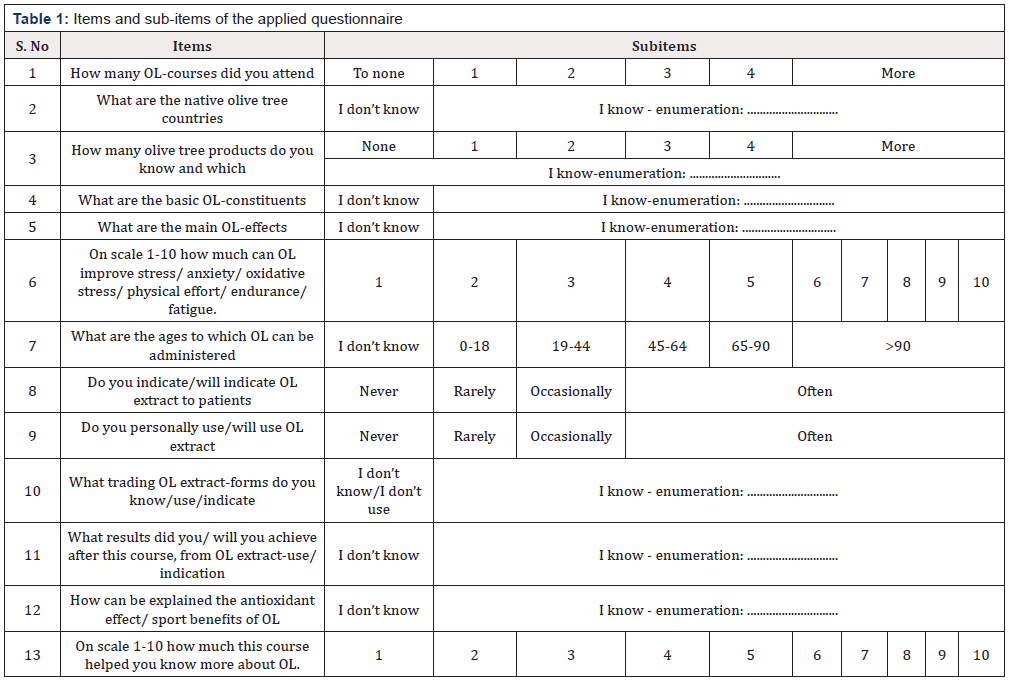

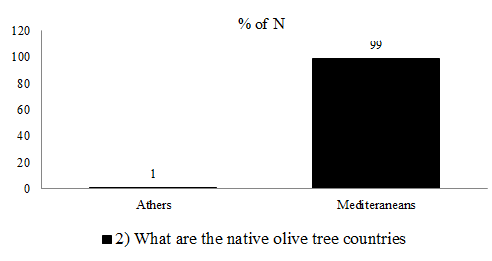

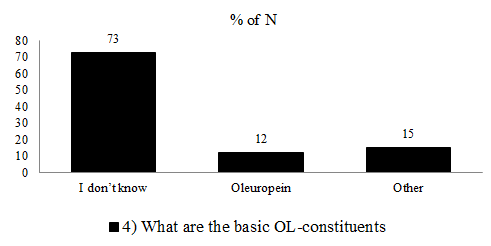


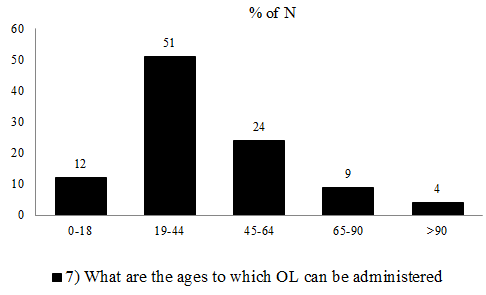
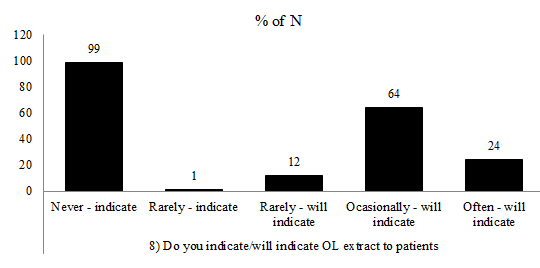

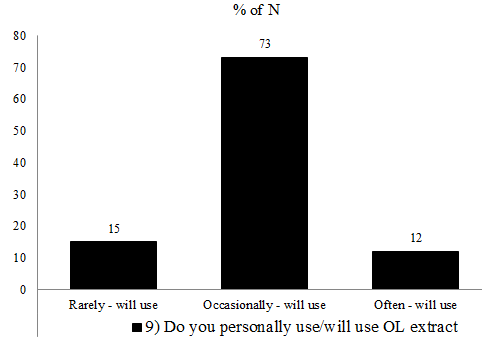
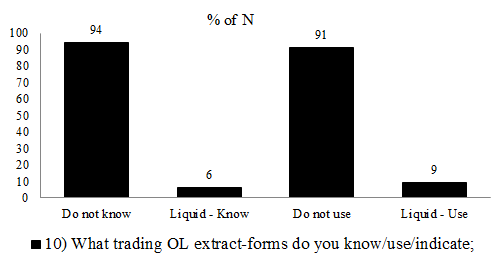
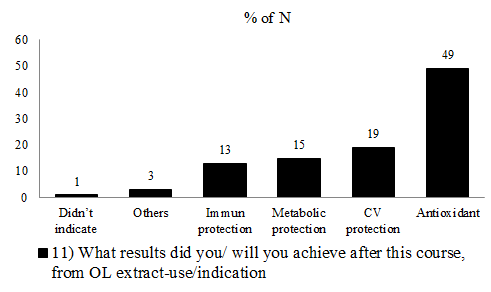
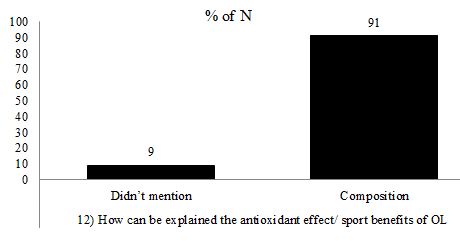
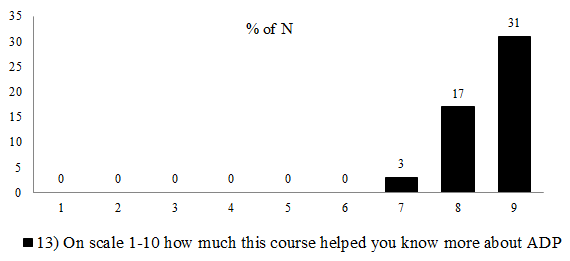


 We use cookies to ensure you get the best experience on our website.
We use cookies to ensure you get the best experience on our website.